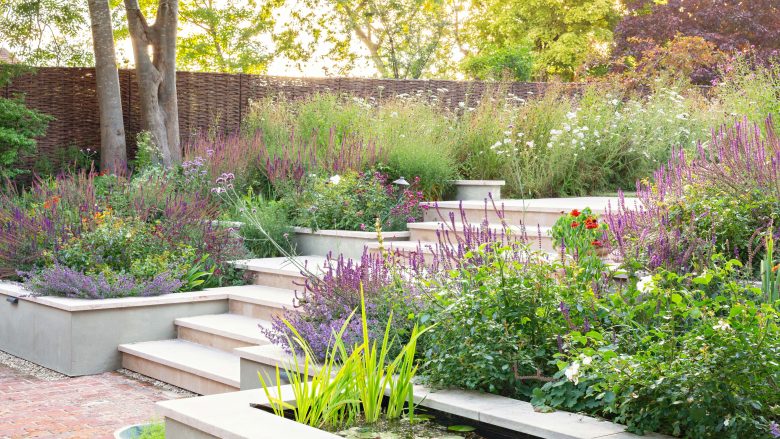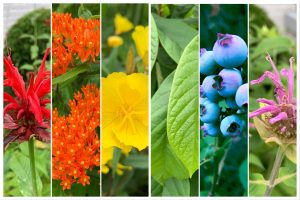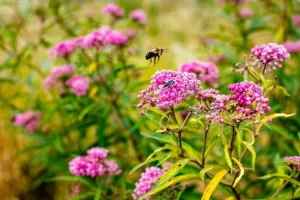Are you considering creating a beautiful and environmentally friendly garden space? If so, then designing a native plant garden may be the best option. Not only are native botanical gardens visually stunning, but they also provide many benefits for the environment and local wildlife. In this article, we explore the art of designing a native plant garden and give you tips and insights to keep your garden thriving.
Why Native Plants?
Before we get into the design aspects, let’s first look at why native plants are a good choice for your garden. Native plants are plants that grow naturally in your area and have adapted to the local climate and soil conditions over the centuries. Here are some compelling reasons to consider them:
- Sustainability: Native plants require less water, fertilizers, and pesticides than non-native species. They have evolved to thrive in their native environment, making them a low-maintenance and environmentally friendly choice for your garden.
- Wildlife Habitat: Native plants provide food and shelter for local wildlife, including birds, butterflies, and bees. By planting native plants you can create a mini-ecosystem in your backyard, supporting biodiversity and contributing to the overall health of the local ecosystem.
- Low Maintenance: Because native plants adapt to local conditions, they generally require less care and maintenance. This means less work for you and more time to enjoy your garden.
Design your Native Plant Garden
Now that you understand the benefits of native plants, let’s look at how to effectively design a native plant garden:
1. Survey your Environment
Start by researching native plants that are unique to your region. Local botanical gardens, nurseries, and online resources are invaluable for this. Identify plants that will do well in the soil and climate of your area.
2. Diversification Plan
A successful native plant garden thrives on diversity. Choose a variety of plants of different heights, colors, and bloom times. This diversity will attract a wide range of pollinators and create a visual appeal all year round.
3. Take Local Conditions into Account
Pay attention to the specific conditions of your garden, such as sunlight, soil type, and drainage. Choose native plants that are well suited to these conditions. Some native plants prefer full sun, while others thrive in shade or moist soil.
4. Create Focus
Every garden benefits from a central point. Consider adding a native tree, shrub, or striking perennial as the focal point of your garden. This can add structure and visual appeal to your outdoor space.
5. Plant in Groups
Plant native species in groups or clusters rather than scattered randomly. This mimics natural plant communities and provides a more attractive aesthetic.
6. Coverage and Maintenance
Applying a layer of mulch helps retain soil moisture and suppress weeds. Native plant gardens still require some maintenance, including occasional watering, pruning, and removing invasive species.
7. Patience is Key
It can take some time for a native plant garden to become fully established. Be patient and let your garden grow and evolve naturally. Over time it will become a vibrant, vibrant ecosystem.
8. Add Native Trees and Shrubs
Native trees and shrubs are the backbone of any native botanical garden. They provide structure, shade, and habitat for wildlife. Depending on your area, you may consider planting species such as oak, maple, or dogwood. These trees not only enhance the beauty of your garden, they also support the local ecosystem.
9. Add Native Grasses
Native grasses can add an element of elegance and texture to your garden. Not only are they drought-resistant, they also provide nesting material for birds. Depending on your location, look for species such as switchgrass, miscanthus or prairie seed drops.
10. Water Wisely
Although native plants are generally better adapted to local conditions, they still require some water, especially during their growing period. Use a water hose or drip irrigation to deliver water directly to the root zone, reducing water waste and promoting healthier plants.
11. Attract Pollinators
One of the joys of a native plant garden is observing the variety of pollinators it attracts. Use a mix of nectar-rich flowers to maximize the number of pollinators. Native species such as propolis, coneflowers, and milkweed are excellent choices for attracting butterflies, bees, and hummingbirds.
12. Embrace the Changing Seasons
Native botanical gardens undergo seasonal changes, which is part of their charm. Some varieties bloom in spring, while others bloom in summer or fall. Plan your garden so that it has something to offer all year round, creating an ever-changing landscape.
13. Learn from Local Experts
Local garden clubs, conservation groups, and native plant associations can be excellent resources for advice, plant swaps, and even group projects. By contacting experienced gardeners in your area, you can gain insight into what works best in your area.
14. Protect your Garden
Consider the broader environmental impact of native plant gardens. By creating a space that supports native wildlife and reduces the need for chemical fertilizers and pesticides, you contribute to local conservation efforts and help protect the natural world.
15. Share your Journey
Document the progress of your native plant garden with photos and stories. Sharing your experiences on social media or a personal blog can inspire others to join the native plant garden movement and make a positive impact on the environment.
Conclusion
All in all, designing your native plant garden is an exciting and rewarding endeavor that not only beautifies your outdoor space but also plays a crucial role in supporting local ecosystems. By carefully selecting native plants and planning and caring for your garden, you can create a haven for wildlife and a source of inspiration for all who visit. So roll up your sleeves, put on your gardening gloves, and start designing your own native plant garden today!
FAQs
1. What are native plants?
Native plants are naturally occurring plant species that have adapted over time to the climate, soil, and environmental conditions of a particular region. They are species that are native to a specific area and play a crucial role in the local ecosystem.
2. Why should I choose native plants for my garden?
Choosing native plants for your garden has several benefits. They are likely to thrive better in local conditions, require less water and maintenance, support local wildlife, and contribute to the overall health of the environment. Native plants also help protect biodiversity.
3. How do I find native plants for my area?
You can find information about native plants for your region by checking local botanical gardens, nurseries that specialize in native plants, and online resources. Many areas have native plant associations or organizations that provide guidance and resources.
4. What are some popular native plant species for gardens?
Popular native plant species vary depending on your region. However, some common native plants include milkweed, coneflowers, black-eyed Susan, bee balm, butterfly weed, and various grasses and shrubs. Research local varieties that are well suited to your specific climate and soil conditions.
5. Do native plant gardens require less maintenance?
Native plant gardens generally require less maintenance than non-native plant gardens. Once established, they generally require less water, fertilizers, and pesticides. However, some maintenance, such as occasional pruning and weeding, is still necessary.



